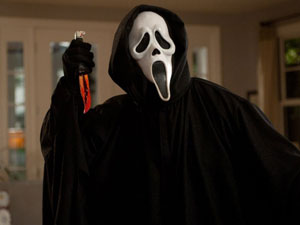Film: Jessica kellgren-Hayes
What makes a horror film?
The modern horror genre is fragmented into various subgenres: found footage, slasher, monster and haunted house to name just a few! But a film does not need to have literal zombies, ghosts and vampires in order to be a horror film. It does not even need to stick to the “horror film rules” that Jamie Kennedy’s character expounds upon in Scream. A film using merely terrors of the metaphorical kind, such as David Lynch’s Mulholland Drive, can, whilst upending some of the more common elements of modern horror, actually be far scarier.

Overlooking for a moment Scream’s rules (which it has an awful lot of fun breaking); horror is, much like comedy, a hugely subjective genre because it must touch at the heart of what an individual viewer finds scary. Further complicating the issue is that ‘horror’ often lives alongside ‘thriller’, which is built on mystery and suspense.
A horror film’s story generally starts off as something similar to a thriller and then, as narrative logic departs, it is corrupted and becomes something else. Or rather: many things. Without the lucidity of narrative the subconscious must take over, creating the horrific and the fantastical.
In one of the rare instances when Sigmund Freud wrote about aesthetics, in 1919’s The “Uncanny”, he analysed tales that “[aroused] dread and creeping horror” and explored the notion of “the uncanny,” which he defined as “that class of the terrifying which leads us back to something long known to us, once very familiar.” Reportedly, Stanley Kubrick used this essay whilst developing the screenplay for The Shining.
Like all good horror films, The Shining takes ‘safe’ and ‘comfortable’ things, like fairy tales, baseballs, cartoons and parental love… and then weaponises them. Another notable film to do this is The Grudge, which removes the idea of a ‘safe space’ from the characters: there is an impossibility of finding shelter and a futility even to running. Characters in the film, and by extension the audience, find that as they retreat from the monsters – be that by pulling up the duvet or covering their eyes – the immediate confrontation with the horrific cannot be avoided… for it has been in the bed with you the whole time.
A great horror film leaves you walking away from the cinema still feeling deeply unsettled. It has touched your subconscious, a place from which you too cannot hide. No ‘safe space’ exists because there is no ‘unsafe space’ to which the horrors belong. Any film that makes you feel that way is, to me a horror film.
Want to quibble my inclusion of Mulholland Drive or have a lot to say about horror films? Send a tweet to either the PostFeature twitter, @PostFeatureTV, or my own personal account and use the hashtag #ThisIsHorror





















